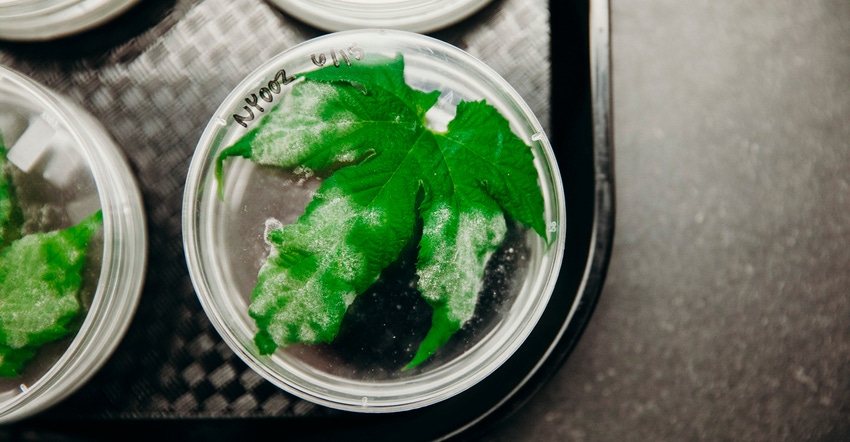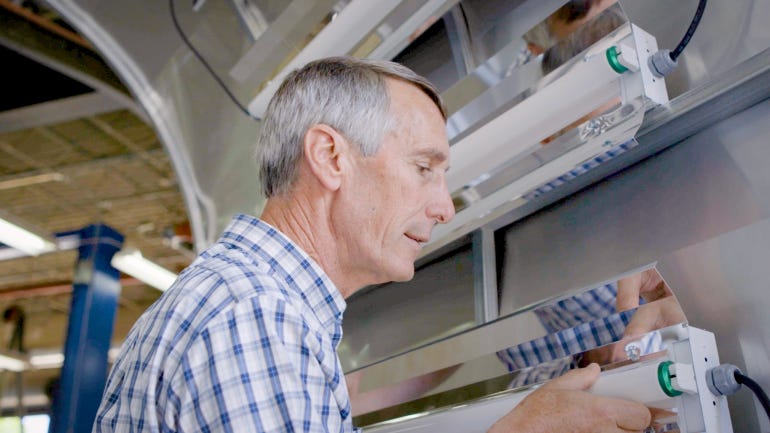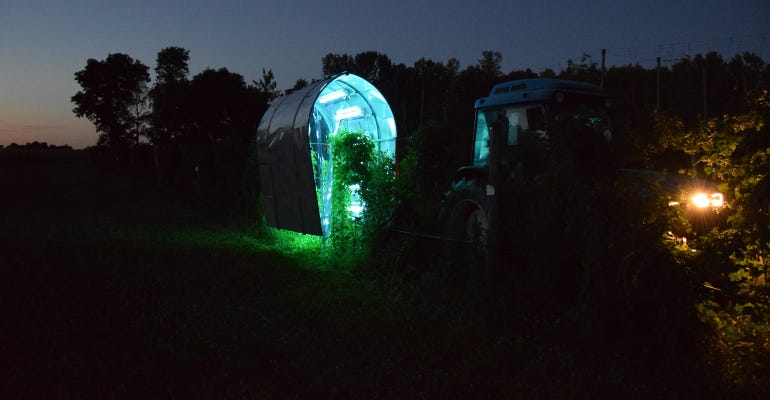May 23, 2019

Farmers may no longer have to rely exclusively on fungicides to suppress destructive plant pathogens like powdery mildew.
Over the past five years, researchers have refined the science and applied technology behind using ultraviolet light to kill the fungi that causes powdery mildew, opening the door for the technology’s use to control other plant pathogens.
“In more than three years of trials, UV light applications worked as well as or better than available fungicides, killing 95% of PM in field strawberries. We’ve seen similar results in field and greenhouse trials of basil, roses, grapes, strawberries, rosemary and cucumbers,” says David Gadoury, senior research associate in the Cornell University Section of Plant Pathology and Plant-Microbe Biology.
Research from Gadoury’s lab, in collaboration with the USDA’s Vitis Gen2 grape research project, indicates that UV light may also control downy mildew, one of the most destructive plant pathogens for a variety of plants.
In research trials this winter and spring, pretreatment of grapevines with UV light activated their natural resistance to infection, something that the downy mildew pathogen can usually evade. But the research suggests that UV light pretreatments may boost overall plant defenses against pathogens.
 SHINING THE LIGHT: David Gadoury, who is leading the UV light study at Cornell University, says that three years of trials show UV light treatments worked as well or better than fungicides in killing powdery mildew.
SHINING THE LIGHT: David Gadoury, who is leading the UV light study at Cornell University, says that three years of trials show UV light treatments worked as well or better than fungicides in killing powdery mildew.

Controlling crop disease is a complicated process of managing resistance to available treatments while fighting multiple pests on multiple fronts. Gadoury says that if farmers can knock out pathogens that are difficult to suppress with fungicides, they can more efficiently manage remaining diseases and insect pests. Using UV light, he says, will allow growers to use fewer fungicides, preserving their effectiveness, and see significant savings.
This option is especially crucial for organic growers as they often have a more limited arsenal of control measures. For high-value crops like strawberries, grapes and greenhouse cucumbers — some of the most heavily treated with fungicides — using UV light could expand organic production.
This year, farmers will have more chances to see the effects of UV light on crops. Working with leading growers and Extension divisions across the U.S., the team will conduct 20 trials with strawberries, squash, pumpkins, cucumbers, grapes, hops, basil and industrial hemp. In New York, the first commercial grapevine field trial will be done in Hammondsport at Bully Hill Vineyards.
 NATURAL DEFENSES: The UV light treatments are designed to boost natural plant defenses against pathogens.
NATURAL DEFENSES: The UV light treatments are designed to boost natural plant defenses against pathogens.

The team’s work is supported by a $1.7 million Organic Agriculture Research and Extension Initiative grant from USDA as well as major grants from the USDA Specialty Crop Research Initiative, the USDA Crop Protection and Pest Management program, and the National Research Council of Norway.
Source: Cornell University, which is solely responsible for the information provided and is wholly owned by the source. Informa Business Media and all its subsidiaries are not responsible for any of the content contained in this information asset.
You May Also Like




